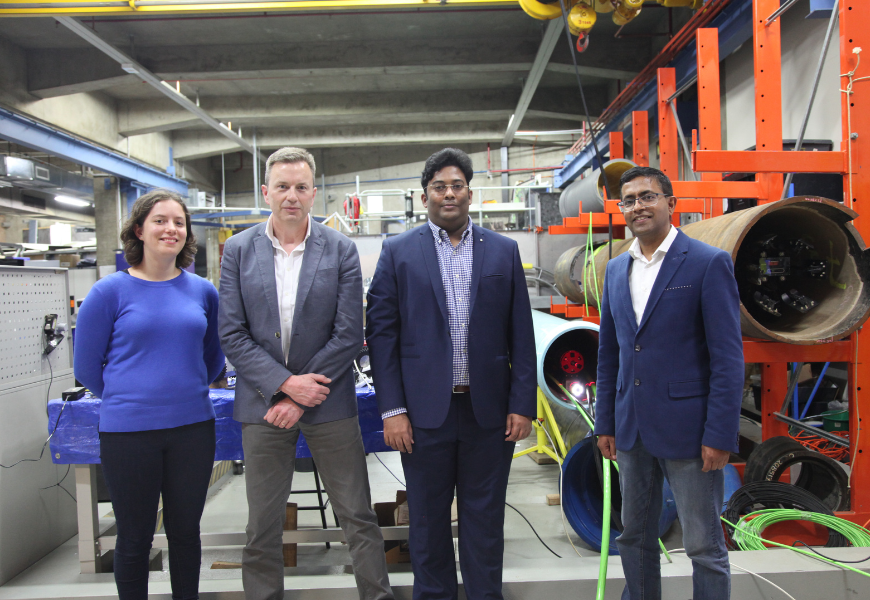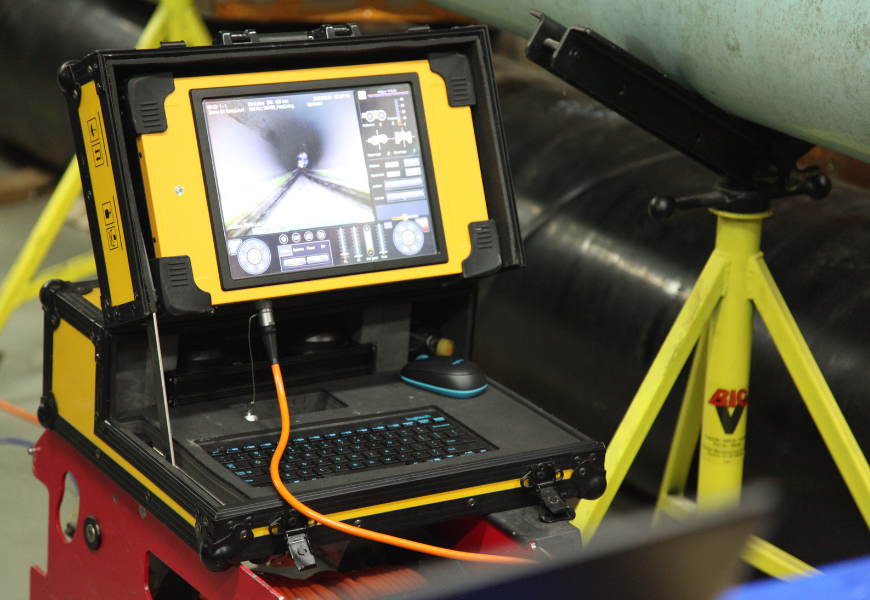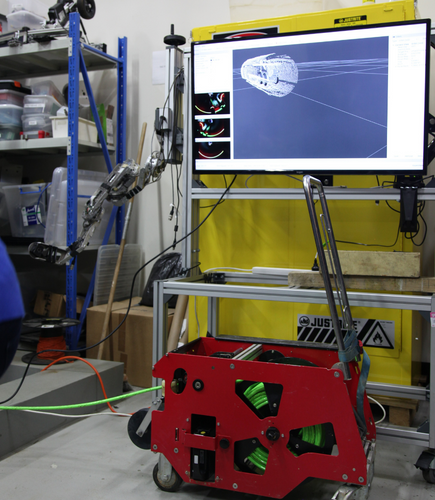The power of robotics to lift digital capability
At nbn, we’re working with Australia’s leading scientists and universities to unleash the power of the internet, inventing new technologies, and enabling others to do so as well.
One recent example of this is exploring the potential use of remote-controlled robots to perform some maintenance and construction tasks on the fixed line network.
In a recent proof of concept demonstration led by the University of Technology Sydney (UTS) Robotics Institute, a small four-wheeled robot was used to traverse a five-metre long, PVC pipe laid with fibre optic cable.
Along with successfully navigating the 250mm diameter pipe, cameras and sensors attached to the robot were used to create a 3D model of the inside of the pipe in real-time on a computer monitor.
The demonstration, part of an ongoing research collaboration with UTS, was a step forward in exploring the viability of using robotics to perform tasks, such as clearing blocked conduit, hauling cable and collecting 3D network data.
If proved viable, the idea would be for the remotely piloted machines to work alongside their human colleagues, performing tasks in places otherwise difficult to access.
Rod Ferguson, Executive Manager Asset Leverage and Innovation, Chief Technology Office at nbn, stressed the robotics project is currently in its early stages with the primary aim to ascertain if it’s worth pursuing.
“This will take time, but if we can make an improvement in the time and quality of field activities that materially de-risks or improves the efficiency of the programs, then it is worth us investigating.
“There is also a lot of scope for expanding this as we grow our capability.”
Bot wait, there’s more
At nbn, we value ongoing professional development and continuous learning, and encourage each other and ourselves to find solutions in productive, competitive and innovative ways.
It’s this forward-thinking approach that led Rod Ferguson to identify Eleanor Forwood as the right person to lead nbn’s robotics initiative.
A member of the nbn Graduate Program since February 2021, Eleanor previously studied Mechatronics Engineering – a combination of electrical and mechanical engineering – at Monash University in Melbourne.
“In nbn’s Chief Technology Office, we are always looking out for new and innovative technologies to explore and, in this case, we were able to match up Eleanor’s skills and background with an opportunity to lead an investigation into an area that was relatively new to nbn,” says Rod.

nbn supplied specifications to the UTS team allowing them to set up the initial proof of concept demonstration using one of their existing robots as a first step in exploring the benefits of using custom-designed robotics on the nbn network.
Eleanor says she was very happy with the results.
“The live demonstration illustrated UTS’ current robotics capabilities in pipes, particularly around sensing the environment within a conduit.
“From this strong functional foundation achieved in such a short time frame, we are confident that, in future project phases, the technology may be developed and tailored to nbn’s specific use cases.”
Where to from here?
Interviews with members of nbn’s field workforce were crucial in helping identify areas where robotics could play a useful role.
The next phase of the project may involve designing built-for-purpose robots that address these specific challenges, such as blockage location and repair, pit inspection, and digging new trenches under roads and driveways to avoid disruptive civil construction works.
“We have collected a range of use cases so far, each of which will likely require a different robotic solution, so we will be selecting one or two based on nbn priority as well as technical feasibility,” says Eleanor.
“We hope our next live demonstration may be of a prototype robot fulfilling one of these use cases, such as identifying or removing a blockage in a conduit.”

Professor Sarath Kodagoda, Director at the UTS Robotics Institute, says the collaborative relationship between nbn and UTS has allowed him and his colleagues to gain a clear understanding of the unique challenges nbn is trying to solve and the potential for robotics to play a part.
“We could see the passion; we could see how nbn was engaged with us. I feel that nbn is a very innovation driven organisation.”
As the nation’s largest infrastructure project, Rod says it makes sense for nbn to investigate applying automation to manual tasks in the field, just as we are automating digital tasks.
He says nbn is fortunate to have the industry relationships – collaborative partnerships with institutions including UTS – and appetite to explore such innovative opportunities over the longer term.

“In this instance, we were very fortunate that nbn has a diverse range of skills, and values breadth of experience particularly in its grad program.”
For Eleanor, a focus on STEM subjects at school fuelled by a love of problem solving meant combining the study of engineering and mechatronics presented the best of both worlds.
She says nbn’s purpose to lift the digital capability of Australia, along with a chance to experience diverse parts of the business, were what attracted her to join as part of the graduate program.
“I didn’t come to nbn expecting to be able to use the full scope of my degree with robotics, but I have and that’s definitely something that has been pretty exciting.”



